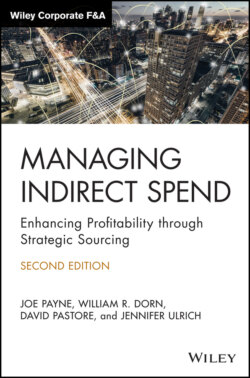Читать книгу Managing Indirect Spend - Joseph Payne, Joe Payne - Страница 63
Manufacturers and Distributors
ОглавлениеThe difference between manufacturers and distributors becomes a consideration when you are purchasing products (as opposed to services). A manufacturer is the organization that actually produces the good you are purchasing. A distributor purchases the goods (normally in large quantities), warehouses them, and then ships them to you (typically in smaller quantities). In the office supplies example used earlier, Staples is a distributor of paper products; however, Staples does not have any facilities that actually produce paper. Instead, the organization buys product from a manufacturer and warehouses it across the country.
The choice of sourcing and purchasing from a manufacturer versus a distributor comes down to three primary factors: cost, quantity, and service level. Most manufacturers prefer to sell their products in quantities of a truckload at a time; however, some may accept half‐truckload or even pallet‐load orders, depending on the market. If you believe the quantities you purchase of a particular product are a motivating factor to the manufacturing community, then you may want to consider including manufacturers in your supplier long list.
Conversely, if your quantities are low, or if you believe you require specific service levels, such as dedicated account management or same‐day deliveries, then you may want to focus your supplier list on distributors alone.
As a side note, many sourcing strategies include engaging with both distributors and manufacturers, even if the initiative ends with the decision to purchase through a distributor. For example, in the area of maintenance, repair, and operations (MRO) supplies, working with manufacturers to standardize the types of products being purchased and committing to a certain volume with those specific manufacturers may result in obtaining special pricing for your organization beyond what a distributor can offer. The distributor still delivers the product, with their markup on top of it, but the base price will be lower.
Another example is enterprise software acquisition, such as Microsoft licensing, or maintenance programs with hardware manufacturers, like Cisco. In both cases, it is common to negotiate directly with the manufacturer and then have the manufacturer require your selected supplier to pass on the negotiated prices. We discuss manufacturer and distributor collaborative strategies in greater detail in Chapter 20.
